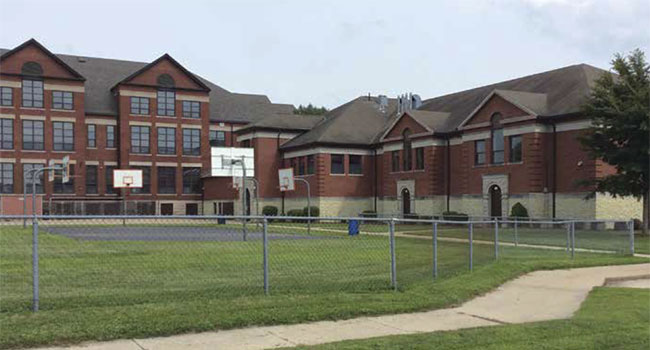
A Redesign in Surveillance
Illinois elementary district upgrades to IP system
- By Jeff Whitney
- Sep 01, 2017
The Ottawa Elementary School District is in Ottawa, Illinois,
a river town 80 miles southwest of Chicago. The
district consists of five schools, the campuses of which
include Jefferson Elementary School, Lincoln Elementary
School, McKinley Elementary School, Shepherd
Middle Schools and the Jefferson Elementary “Art House” building.
In the spring of 2015, a variety of issues caused the schools’ administration
to determine that they needed a surveillance system upgrade.
The district’s IT director, Kyle Olesen, met with Nick Melnyk,
a systems integrator for Ficek Electric & Communication Systems,
and the Arecont Vision regional sales team, ultimately sparking a
major collaboration to redesign the surveillance systems used by all
their schools.
Out with Analog
The district had been using mostly analog cameras for its school surveillance.
The original cameras had been placed throughout the five
campuses without a formal coverage strategy, hindering the usefulness
of the surveillance system. This prevented key areas from being
effectively monitored and the images that were provided by the analog
cameras were of low quality.
New challenges presented themselves as the project continued.
With five completely different locations to work with, it was clear
that the project would be a long-term one. It was imperative that the
installation efforts be planned accordingly. Part of planning was to
treat each school as a separate project with its own surveillance coverage
layout and system requirements.
Such a long undertaking meant staffing challenges. The project
manager changed five months into the project, resulting in the bidding
process to be undertaken a second time. A Chicago-based architecture
and engineer firm was then hired by the school to help
facilitate the project. Educational sessions were offered by Arecont
Vision to bring the new firm up to date on IP megapixel camera technology.
The end user, systems integrator and all other stakeholders
were brought up to speed quickly and efficiently.
Introducing the Technology
During the first meeting with the district in 2015, the IT director was
introduced to megapixel single- and multi-sensor cameras. The end
user was impressed, and a more in-depth meeting was scheduled.
This led to walkthroughs at each of the five campuses to outline recommendations
for camera locations and models.
The individual schools were pleased with the camera performance
during this series of events, and the project continued into the design
phase. During this period, the district received a detailed layout for
each school. The layouts outlined the coverage area that each camera
would provide.
After completing the design phase, the systems integrator and
the school district participated in the Arecont Vision Try-and-Buy
Program. This program provided the end user community with the
opportunity to experience Arecont Vision megapixel cameras before
committing to a full installation. The Ottawa School District approved
the installation of networked cameras in all five locations in
July 2016.
Exacq Technologies, part of the Security Products business unit
of Tyco, was selected as the VMS provider. Exacq and Arecont Vision have thousands of joint installations
for schools and other surveillance projects
around the world, and they are a member
of the Arecont Vision Technology Partner
Program. Their VMS has been tested in the
Arecont Vision MegaLab, and has been certified
for continued integration.
The five schools use an array of cameras
throughout the district. The multi-sensor,
panoramic 180-degree SurroundVideo and
adjustable-view SurroundVideo Omni series
provide coverage of large areas such as cafeterias,
gyms and parking lots.
Arecont Vision MicroDome G2 series
cameras were used for interior areas such
as for coverage of hallways and doorways.
MegaView 2 series cameras equipped with
STELLAR (Spatio Temporal Low Light Architecture)
technology were implemented for
day and night outdoor coverage.
Made in the U.S.A.
Arecont Vision cameras used by the project
are hardened against potential cybersecurity
attacks, and cannot be repurposed for malicious
purposes, giving the schools an added
level of security protection.
The cameras are monitored locally and
remotely by the schools, using the Exacq
software. Each school’s administration has
access to the cameras monitoring their individual
campus, allowing for real-time monitoring
throughout the day. Video can be
accessed remotely, with playback from any
camera using district laptops and tablets.
“Our company is satisfied and the customer
is pleased with the images obtained by
this camera system,” Melnyk said. “Everything
fits; the accessories and mounts. That
all comes into play because a lot of times you
can be sent equipment with wrong accessories
and other things that don’t fit, extending
the installation process longer than it needs
to be. This project and
installation went very
smoothly.”
This article originally appeared in the September 2017 issue of Security Today.